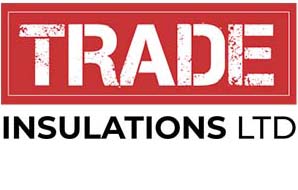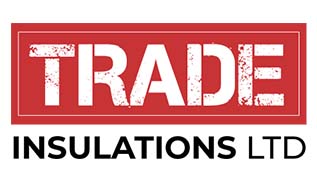Roof insulation is fundamental when it comes to maintaining a comfortable environment within your home from reducing monthly bills to improving your properties energy efficiency. Installing the correct insulation, in the method best suited your home, can keep internal temperatures controlled all year round no matter the weather.
Benefits of Roof Insulation:
- Roof insulation will lower your monthly heating and energy bills by reducing the warm air lost through the roof
- Reducing the levels of warm air leaving the property will improve your homes level of energy efficiency
- There are multiple application methods and insulation materials to choose from when insulating your roof to best suit your property
- Insulation will help to circulate the heat within your home and prevent hot air coming in
- When installed correctly the insulation will help to reduce condensation and damp risks as well as moisture related issues

What Materials Can Be Used for Roof Insulation?
There is no one perfect material when it comes to insulation your roof and the method of application and type of material you choose should depend solely on the requirements of your property. Materials that can be used within pitched roof installations are rigid foam and mineral wool.
The key element that differentiates mineral wool and rigid boards is the materials form and texture and the thermal conductivity. Rigid insulation boards generally boast a much lower thermal conductivity than mineral wool, although that does not necessarily mean it’s the better choice.
Mineral Wool
Mineral wool is available in batts, slabs, or rolls and is made up of raw materials such as glass, stone, and rock. Mineral wool materials have many benefits such as temperature control, sound reduction, fire protection, and moisture resistance.
Mineral wool slabs and rolls have a variety of thicknesses between 25mm and 220mm. This material is flexible and compressible which is great for installation in areas with tight access. Although mineral wool products are flexible, they can still be installed between and over the rafters providing the required fixings are used.
Mineral wool rolls and slabs can be installed:
- Between the rafters/joists in the pitched roof
- Between rafter/joists in the walls
- Horizontally over the rafters/joists
- Between the rafter/joists in the floor
Insulation Boards
The rigid foam boards are generally made up of Polyisocyanurate (PIR) with foil facings on each side. PIR boards are 2400mm by 1200mm and range from thickness between 20mm and 200mm. The wide of thicknesses is great for roof insulation to match the depth of the space between rafters. The thinner sizes are also great when overlaying rafters to utilise as much space as possible whilst improving the thermal quality. The foil facings of insulation boards are designed to reflect heat whether that be away from the property such as heat from the sun or back into the property such as the internal heating. PIR boards can be easily cut with a knife and friction fitted to install or mechanically fixed depending on the area of application.
PIR insulation is versatile and can be installed:
- Between the rafters/joists in the pitches roof space
- Between the rafter/joists in the floor within the roof space
- Between rafter/joists in the walls within the roof space
- Above and across the rafters/joists within the roof
- Between rafters in cold flat roof applications
- Above and across the rafters in warm flat roof applications
Pitched roof insulation
Pitched roofs are best recognised for their sloping surface seen on many houses. They can be insulated using several techniques, however two in particular are the most popular choice among builders and architects, warm loft and cold loft insulation.
Warm Loft Insulation: Warm loft insulation is when insulation is installed under the roof in between the rafters, meaning both the loft and the roof is warm. This is the perfect method if using the area as a living or storage space.
Cold Loft Insulation: Cold loft insulation is when insulation is installed above the ceiling of the top storey, or the floor of the loft, so no heat from the home gets lost in the loft space. This can be a simple and effective option, particularly if you have no intention of using the loft space. This is also a cheaper alternative.
Flat roof insulation
Flat roofs were often used on houses built in the 60s however have now become a staple of modern architecture, flat roofs are also often found on extensions. Depending on the design of the roof, you can either insulate below or above the roofs structural deck. Flat roofs require careful consideration to prevent issues with condensation and moisture. The two commonly used methods when it comes to flat roof insulation is warm roof insulation and cold roof insulation.
Cold Roof Insulation: Cold roof insulation is placed underneath the roofs structural deck in between the rafters. Cold roof insulation is often a cheaper option when insulating a flat roof but not as effective and includes a higher risk of condensation developing.
Warm Roof Insulation: Warm roof insulation is placed above the roofs structural deck and laid horizontally over the rafters and often beneath a waterproofing layer. Warm roof insulation can be pricier but more effective and has a lower risk of thermal bridging occurring.
Rafter insulation
Rafter insulation is commonly used in pitched roofs to make the loft space accessible. This form of insulation will keep the loft insulated without cutting into the space. This method of insulation involves installing insulation in between each rafter in the pitched roof space and sometimes applying an additional layer of insulation horizontally over the top. When converting a loft space into a room, insulation is essential to avoid the space over heating or reaching uncomfortably low temperatures.

